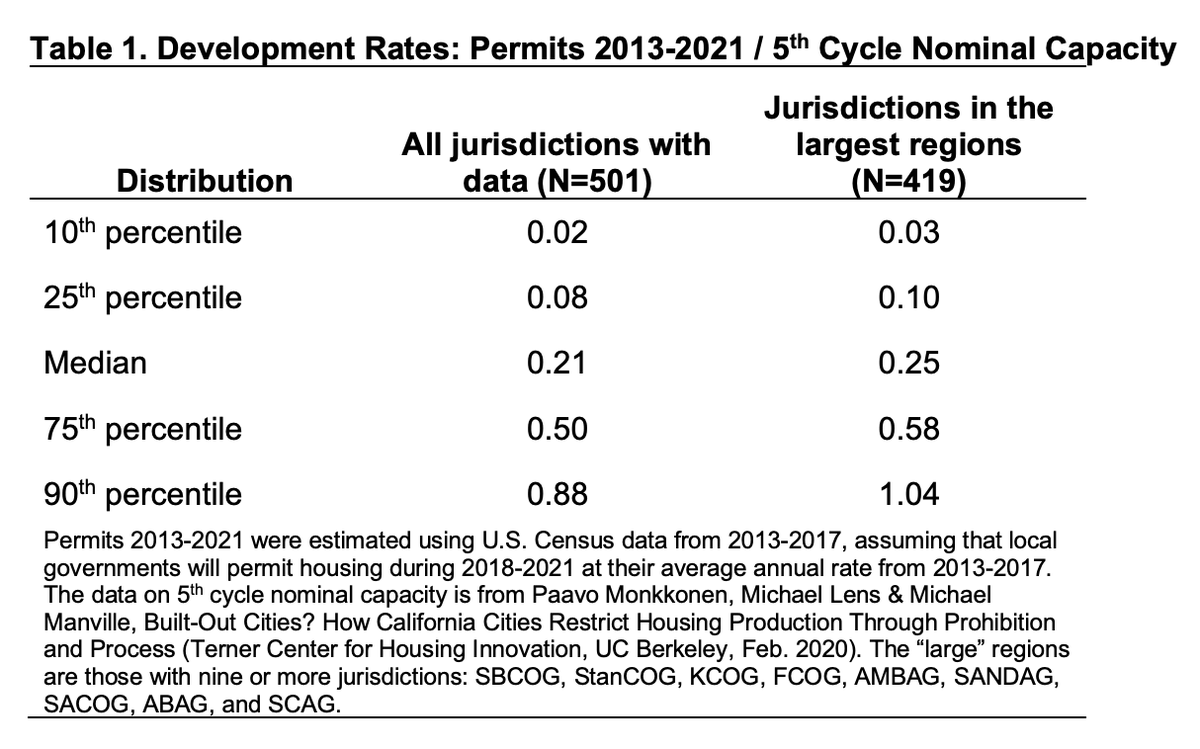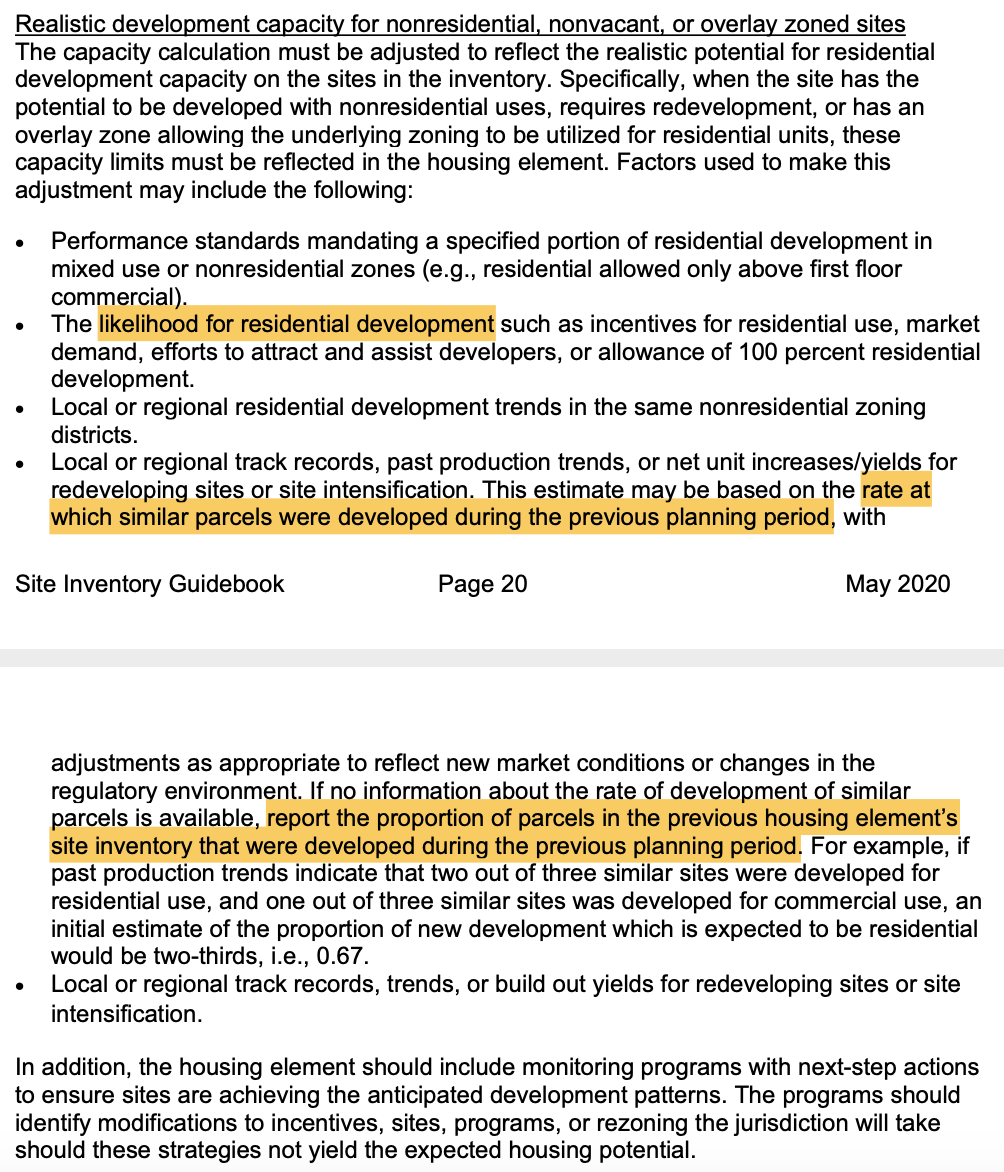Earlier this month, @California_HCD posted a little-noticed memo that massively increases the amount of "zoned capacity" for new housing that local governments must provide. This thread explains it. 1/n
https://www.hcd.ca.gov/community-development/housing-element/docs/Sites_inventory_memo_final06102020.pdf">https://www.hcd.ca.gov/community...
https://www.hcd.ca.gov/community-development/housing-element/docs/Sites_inventory_memo_final06102020.pdf">https://www.hcd.ca.gov/community...
CA requires local govts periodically to adopt a state-approved plan, called a "housing element," to accommodate local share of regional housing need. A housing element must inventory developable sites and estimate their capacity. 2/
If aggregate site capacity is less than local govt& #39;s housing target, local gov& #39;t must rezone for greater density and allow by-right development of 20%-affordable projects (speedier permitting, fewer cumbersome conditions). /3
Thus, whether the state requirement to "plan" actually results in substantially greater zoned capacity and less permitting rigmarole depends--hugely--on how one calculates the capacity of sites under current zoning. /4
In previous planning cycles, housing plans counted sites for the number of dwelling units they would yield *if they were developed*, ignoring likelihood that many sites will not be developed during the 8-year planning cycle. /5
This was like a college undertaking to "plan" for a freshman class of 1000 students by admitting 1000 applicants. No college would do that. Colleges estimate the probability that applicants will decline their offer of admission, and plan accordingly. /6
Unsurprisingly, when local governments ignore development probabilities, they miss their targets. The median CA local government is now on track to develop only about 25% of what it claimed as site capacity in its last housing element. /7
But new legislation demands "realistic" capacity calcs, and also gives @California_HCD "standards, forms, and definitions" authority. I and coauthors have argued that HCD may now require discounting of site capacity by development probability. /8 https://papers.ssrn.com/sol3/papers.cfm?abstract_id=3500139">https://papers.ssrn.com/sol3/pape...
And that& #39;s what the new guidance memo does! /9
The memo signals that HCD will treat "the proportion of parcels in the previous housing element that were developed during the previous planning period" as the presumptive probability of development for current inventory sites, absent other information. /9
Again, for the median local government, that& #39;s roughly 1 in 4 sites. So if a local government& #39;s housing target is 5,000 units, it will have to provide zoned capacity for 20,000 units. /10
But: whether this on-paper requirement has teeth in practice will depend on how effectively YIMBYs organize and pressure city councils and HCD on the new housing plans, which are scheduled to be adopted over the next 2 years. /11 @Yimby_Law @cayimby @dillonliam @mlevinreports

 Read on Twitter
Read on Twitter



